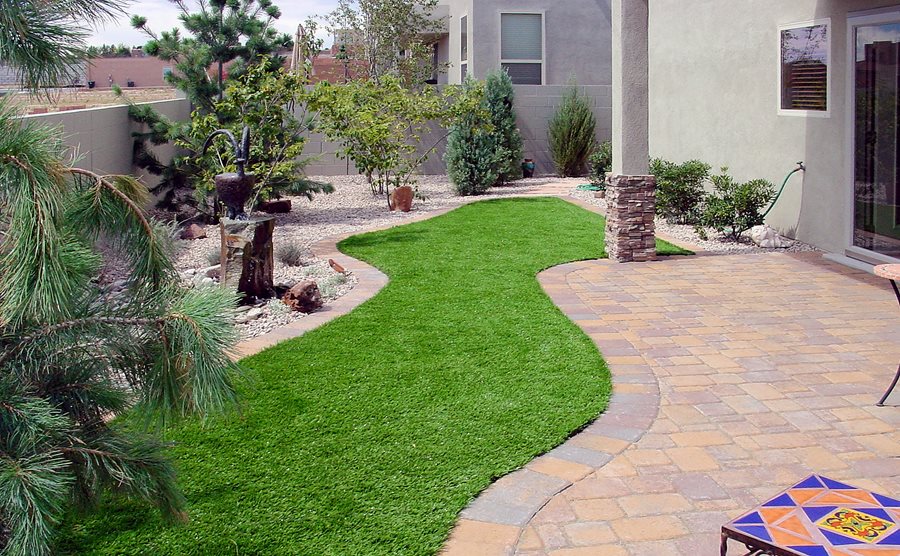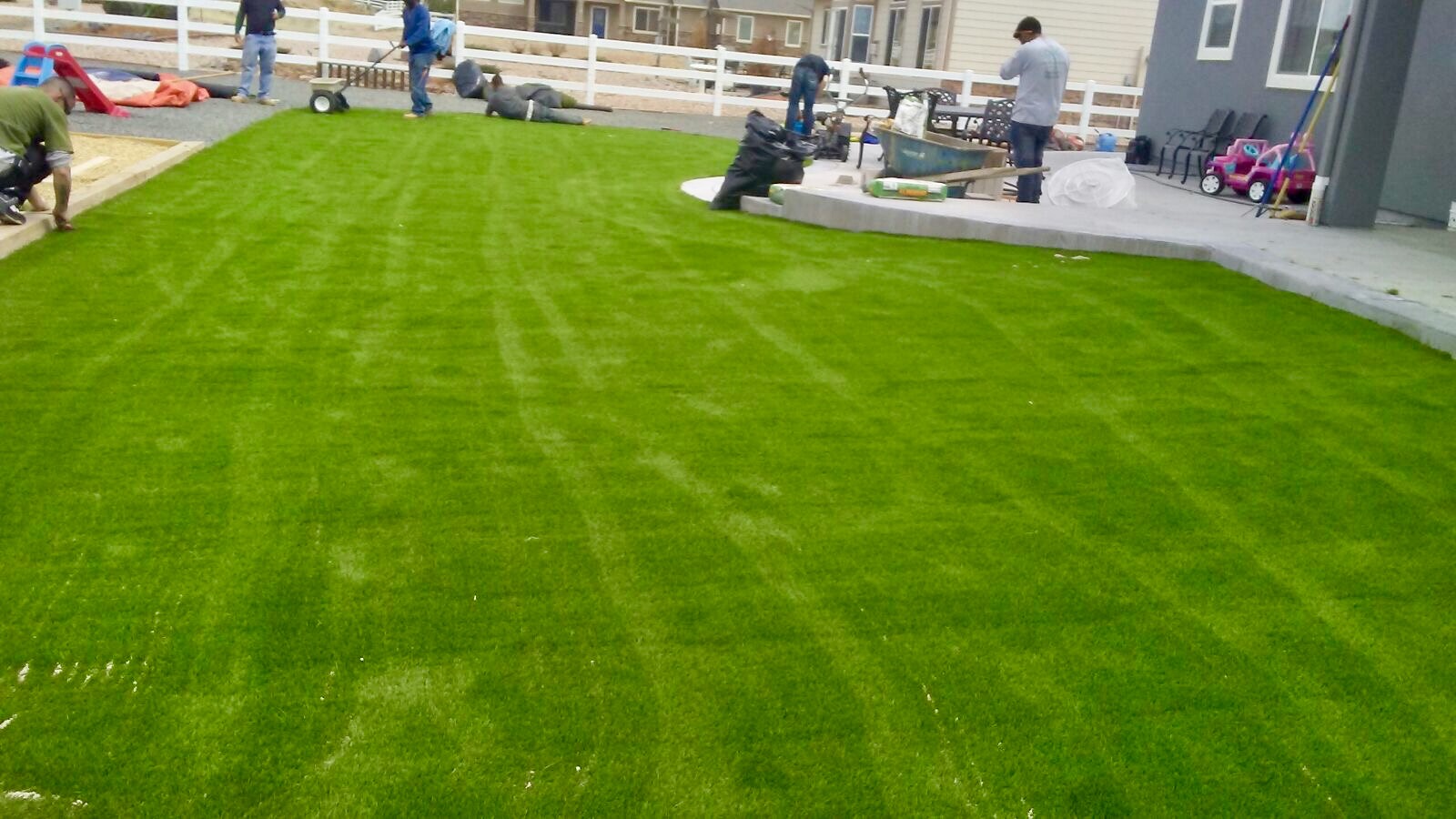Eco-Friendly Arizona Artificial Turf for a All-Season Lush Green Lawn
Eco-Friendly Arizona Artificial Turf for a All-Season Lush Green Lawn
Blog Article
Explore the Environmental Benefits of Opting for Artificial Lawn Solutions
The fostering of synthetic grass options provides an engaging possibility to attend to pressing ecological obstacles. By significantly reducing water usage and decreasing the application of dangerous chemicals, these choices not just promote sustainable landscape design yet additionally safeguard regional environments. Additionally, the reduced carbon footprint connected with reduced maintenance activities contributes to an extra sustainable strategy to land monitoring. The ramifications of these advantages expand beyond plain preservation initiatives, increasing questions about their lasting impact on habitat conservation and total ecological equilibrium. Discovering these measurements exposes an intricate interplay worth considering.
Water Conservation Advantages
Among one of the most substantial benefits of synthetic grass is its capability to save water. Typical lawn yards need significant watering, specifically in locations vulnerable to drought or water restrictions. On the other hand, synthetic grass does not require watering, dramatically reducing the general demand for water resources. This feature is especially beneficial in arid areas where water deficiency is a pushing concern.
By eliminating the requirement for normal watering, synthetic turf adds to sustainable landscape methods and aids alleviate the environmental effect of too much water consumption. The conservation of water prolongs to the decrease of drainage, which can lead to soil disintegration and river air pollution.
Additionally, the installment of synthetic lawn permits communities and property owners to allot water resources a lot more successfully, concentrating on essential uses such as alcohol consumption water and farming. The shift in the direction of synthetic grass not just promotes accountable water usage but also lines up with more comprehensive ecological objectives aimed at preserving natural resources.
As communities increasingly focus on sustainability, the water conservation benefits of synthetic grass present a compelling case for its fostering in domestic and industrial landscaping projects.
Lowered Chemical Use
The shift to synthetic grass dramatically decreases the dependence on chemical therapies frequently utilized in natural grass upkeep. Traditional turf administration normally includes the application of fertilizers, chemicals, and herbicides to promote growth and control insects. These chemicals can pose threats to human health, local wildlife, and the setting, adding to soil and water contamination.
In contrast, synthetic grass eliminates the requirement for these harmful materials. Once mounted, it requires marginal upkeep, largely including normal cleaning and infrequent infill replenishment. This reduction in chemical use not just benefits the prompt environment however additionally adds to broader eco-friendly stability. By reducing the release of synthetic substances right into the environment, synthetic grass promotes much healthier soil and water supply.
Additionally, the lack of chemical runoff linked with synthetic grass installations aids secure local rivers from pollution, supporting water life and preserving biodiversity. Arizona artificial turf. As areas progressively focus on sustainable practices, opting for synthetic grass presents a viable remedy that lines up with environmental conservation objectives. Via this shift, homeowner can delight in rich environment-friendly rooms without jeopardizing environmental wellness, leading the method for a much more sustainable future
Reduced Carbon Footprint

In addition, the setup of artificial lawn can result in significant water preservation. Natural yards need considerable quantities of water for watering, which not just contributes to the carbon impact related to water extraction and therapy but likewise pressures local water resources. On the other hand, artificial lawn requires very little upkeep, calling for no watering, thereby considerably reducing water use and its linked power costs.
Additionally, the durability of fabricated lawn adds to its lower carbon impact. With a lifespan of as much as 15 years or even More hints more, the need for constant substitutes is reduced, resulting in less waste and lower power consumption in production and dealing with typical grass alternatives. Generally, synthetic grass provides a sustainable choice for eco mindful landscaping.
Habitat Preservation
Habitat preservation is a crucial consideration in the debate over landscaping choices, specifically when contrasting synthetic grass to all-natural turf. Natural yard yards often call for considerable maintenance, consisting of making use of fertilizers, pesticides, and herbicides, which can detrimentally influence regional ecological communities. These chemicals can seep right into the dirt and waterways, damaging native flora and fauna and interrupting local environments.
Synthetic grass gets rid of the demand for damaging chemicals, therefore protecting close-by wildlife and preserving the stability of bordering communities. The setup of synthetic grass can lead to the conversion of former yard locations right into even more biodiverse landscapes, such as pollinator gardens or indigenous plant locations, which can sustain regional wild animals.
Inevitably, the transition to artificial lawn not just preserves water and reduces upkeep initiatives however likewise promotes a much more harmonious relationship in between human tasks and the natural surroundings, promoting habitat preservation over at this website at the same time.
Long-Term Sustainability
Long-lasting sustainability is an important element in examining the advantages of synthetic turf over typical turf lawns. Among the most significant advantages of artificial grass is its toughness; it can last up to 15-20 years with very little maintenance, whereas all-natural turf requires regular reseeding and substitute. This long life reduces the need for consistent resources, such as water, plant foods, and pesticides, which are vital for preserving a healthy and balanced turf yard.
Additionally, synthetic grass adds to a decrease in carbon discharges connected with lawn care tools. Conventional yards frequently need gas-powered lawn mowers, leaners, and blowers, every one of which add to air pollution. Arizona artificial turf. In contrast, synthetic grass gets rid of the requirement for such tools, promoting a cleaner environment
Moreover, the production of synthetic grass increasingly makes use of recycled products, enhancing its sustainability account. As producers embrace eco-friendly methods, the environmental impact of fabricated turf continues to diminish.

Verdict
The fostering Click This Link of fabricated grass remedies offers substantial ecological advantages, consisting of substantial water preservation, lowered reliance on unsafe chemicals, and a reduced carbon impact. In addition, fabricated turf aids in preserving natural environments by decreasing land disturbance and promoting long-lasting sustainability with making use of resilient materials. Jointly, these variables emphasize the capacity of synthetic grass to add positively to environmental wellness and use a practical alternative to conventional landscaping techniques in a significantly resource-conscious world.
In contrast, man-made turf does not require watering, substantially decreasing the general demand for water sources. By reducing the launch of synthetic compounds right into the environment, artificial lawn promotes much healthier dirt and water systems.
Moreover, the installment of man-made lawn can result in considerable water preservation. In contrast, fabricated grass requires minimal upkeep, needing no watering, thus dramatically decreasing water use and its associated power expenses.

Report this page